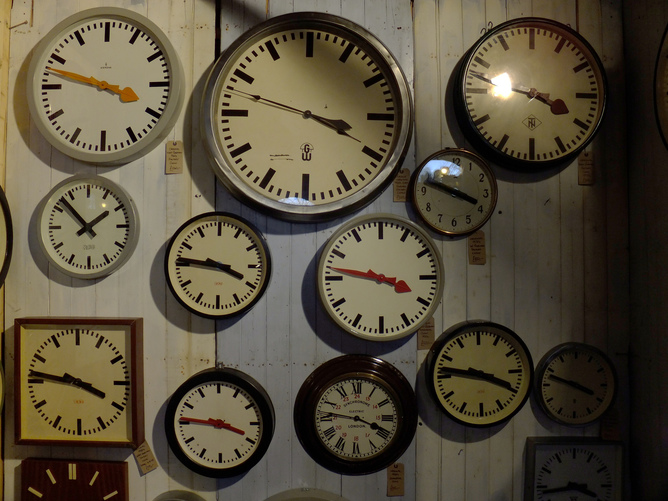Amid the many calls for scientists to engage with the general public, there are some who feel that scientists ought to remain aloof and disconnected from the broader public.
They believe academics shouldn’t even attempt to communicate their research to common folk. And many scientists oblige them, by writing in a turgid manner that is highly effective at keeping the public (and their peers) at bay.
So, here are a few of the tricks that scientists use to produce such turgid science writing. These methods restrict science to the smallest and most specialist audience possible.
But writers beware! Stray from these methods and you risk finding an audience for your writing.
What was done by whom?

Keeping yourself out of the picture is an old-fashioned way of reducing interest in science. Windell Oskay/flickr
You probably already know of journalists' penchant for “who, what, where, when, why and how”. These are the essentials for creating a captivating story (at least according to journalists). But for scientists who want to remain in the ivory tower, a good start is dropping the “who.”
Hence the passive “it was found that…” rather than the active “I found…” or “scientists discovered…”. Excessive use of such passive voice can easily drain the agency and sparkle from science writing.
This depopulated style was once the norm in many academic journals but even bastions of science such as Nature prefer the active voice. No longer should scientists write themselves out of their own manuscripts.
That said, a few funding agencies and journals still encourage the old style of science writing. For example, in hundreds of ARC Discovery Project summaries the word “we” occurs a mere 30 times. I’ve even seen guides for students encouraging the use of the passive voice. Nice to see that universities' devotion to old traditions isn’t limited to dull lectures and silly graduation garments.
What’s a picture worth?
A scientist writing about science may well be forced to use images and plots. This obviously presents a risk of clear and concise means of communication. A picture is worth a thousand words? Wrong!
The key to unlocking a science image or plot is often in the caption. I can show you a plot of supernovae distances and velocities, but if you are unfamiliar with the plot and its conclusions it may tell you nothing. It’s Nobel Prize-winning significance can remain hidden from view.

But what does it mean? Supernova Cosmology Project
A caption can tell you what to look for, warn you about subtleties in the image, or just tell you what the axes represent. A poorly worded caption can guarantee that a picture tells far less than a thousand words. Alternatively, an overly long caption can bury key points in a wall of text.
And there are even more ways of keeping science out of the limelight with images and plots. Some scientists choose font sizes, symbols and colors that don’t work well when viewed on a screen. More than a dash of clutter can stymie insight too. That can reduce the chance that images are understood by an increasingly small audience.

This image could tell you a lot about galaxies, but not with this perfunctory caption. Michael Brown / SDSS
Language
There are all sorts of ways scientists can hinder communication by misusing language. Unnecessary jargon and acronyms (UJAA) are an obvious starting point. Indeed, a recent study found that scientists committing fraud use more jargon than other scientists, presumably to obscure true understanding of their “research”.
Scientists can also water down the impact of their work with excessively cautious language. Or perhaps, it is possible they might potentially water down any likely impact of their preliminary study with language that could in some circumstances be consistent with excessive caution.
Scientists can antagonize their audiences too. Stating something is “obvious” or “clear” without any quantitative analysis is a good start. They may even want to ignore their data, so the text doesn’t match the analysis. Scientists may be pleasantly surprised at how often they can get away with this.
What I did on my science
An incredible labor-saving device is a slavish devotion to chronology. Some science writers don’t organize and synthesize, but just doggedly follow the time line. You may be familiar with this writing style from primary school essays, such as the timeless classic “what I did on my holiday”.
The pursuit of science is not particularly linear. There are methodological dead ends, repeated analyses, new questions and the random arrival of genuine insights. With the benefit of hindsight, a researcher would invariably do things differently, but they don’t need to share that hindsight with others.
Rather than summarizing methodological dead ends, pages can be devoted to them, despite their marginal benefit to others. A slavish devotion to chronology allows scientists to get bogged down in method, rather than distractions such as motivations and findings.
Scientists can scatter the fundamental questions and key insights throughout their writing (ideally in the middle of paragraphs), which will then be overlooked by all but the most dedicated readers.

By being slavishly chronological, you can get bogged down in method and reduce the organization of your science writing. J Mark Dodds/flickr
With these simple techniques scientists can resist the siren call of public engagement. Interest and insight can be avoided, keeping the public at arm’s length.
Indeed, with sufficient devotion to this turgid and disorganized writing style, scientists may even keep interest and insight hidden from themselves.![]()
By Michael J. I. Brown, Associate professor, Monash University. This article was originally published on The Conversation. Read the original article.



Comments